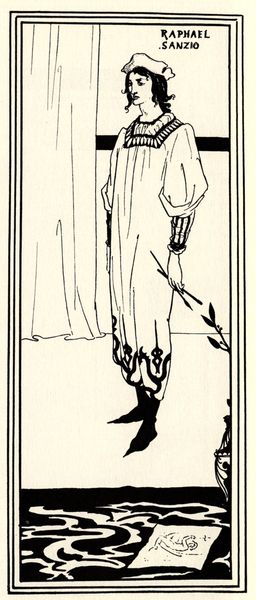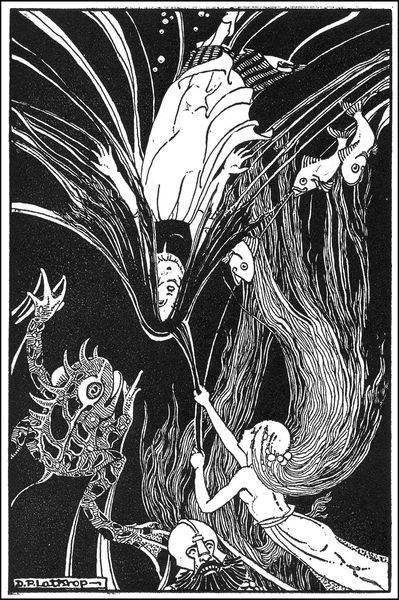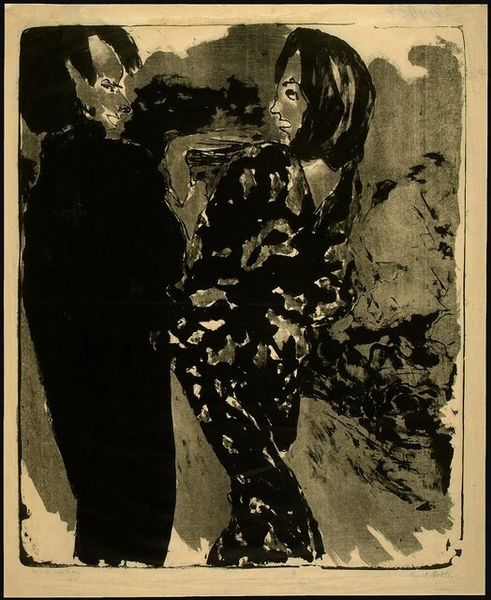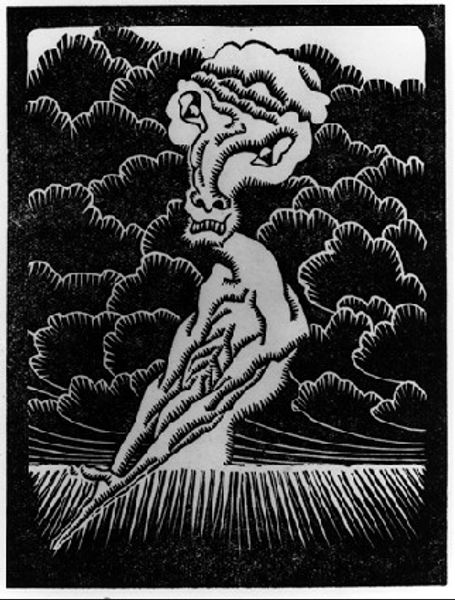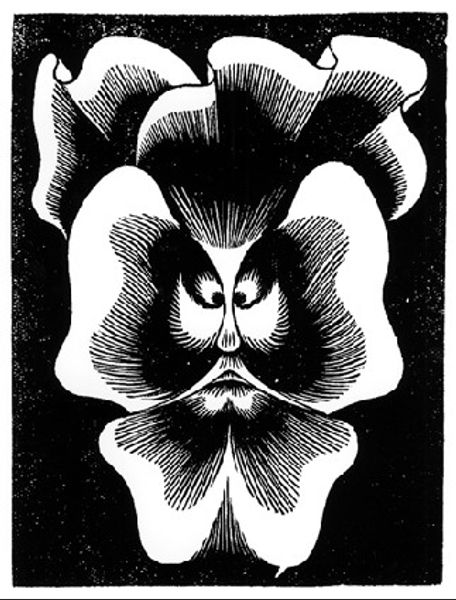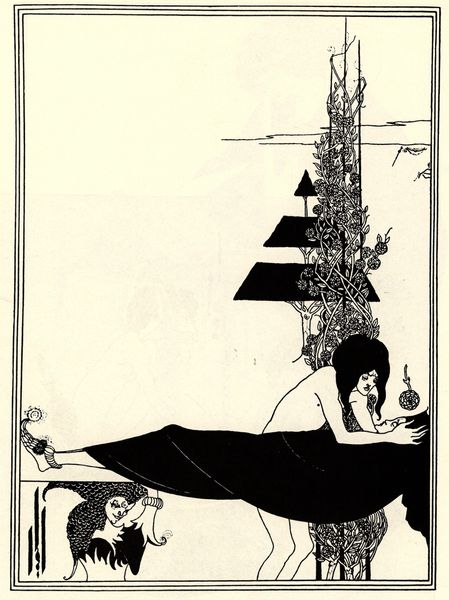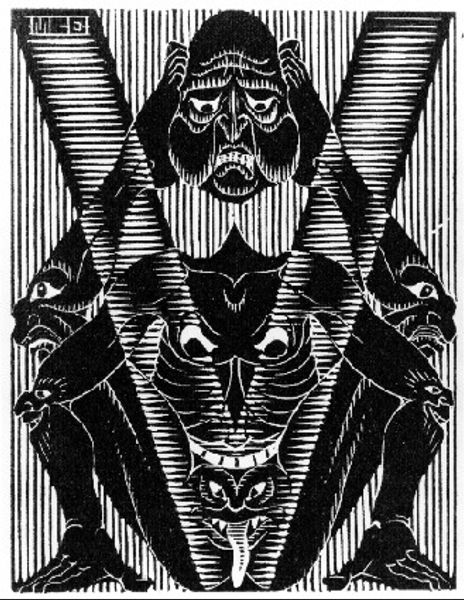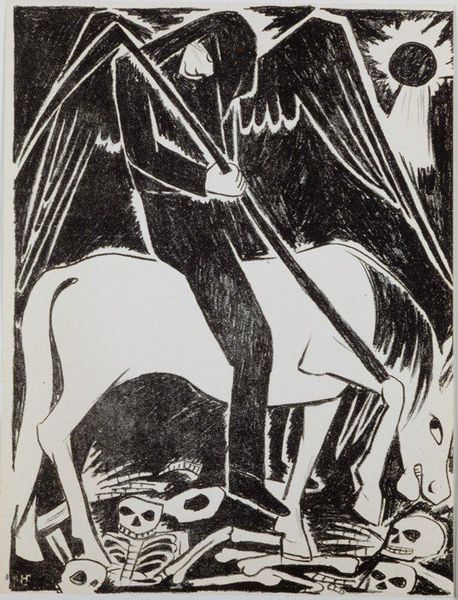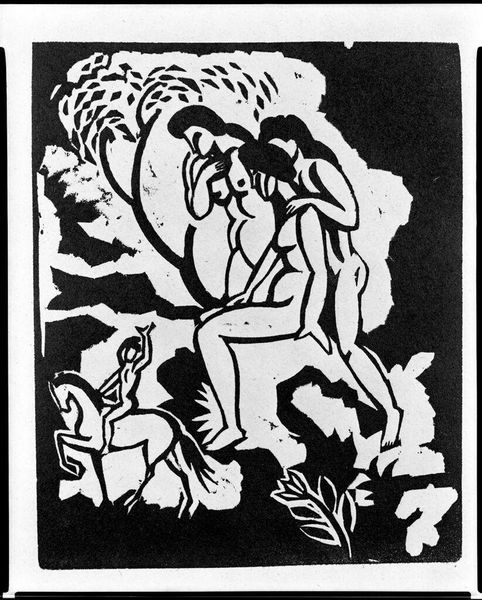
Copyright: Public domain US
Editor: Here we have M.C. Escher’s 1921 woodcut print, "Flor de Pascua - The Scapegoat." It's stark black and white, split into two distinct halves featuring a devil-like figure and a goat, separated by what looks like the head of a person in the center bottom. What socio-political meaning do you think Escher might have been trying to convey through this image? Curator: It's intriguing how Escher utilizes this stark dichotomy. Consider how the "scapegoat" motif functions historically. It’s often been employed to demonize marginalized groups. In Escher's time, there was increasing tension around class, national identity, and the rise of extremist political ideologies. Does this resonate when you observe how the figures are placed within such rigidly defined spaces? Editor: Absolutely. The figures feel trapped. The rigid black and white division amplifies the feeling of forced binary opposition, and maybe reflects society's need to place blame. Do you think this image challenges or reinforces the idea of a scapegoat? Curator: That's the critical question, isn't it? Escher gives us this unsettling balance, almost like a loaded accusation that things aren't what they seem. We have to ask, who benefits from maintaining these binaries? Who gets labeled the 'devil' and who remains seemingly 'pure'? Editor: The tension is palpable. The central face is almost obscured and I’m not quite sure about its relevance, however I see it perhaps represents the silenced voice of the scapegoat in a system. Curator: Precisely. This highlights the importance of deconstructing the power structures inherent in such representations. What appears simple often conceals deeper, more uncomfortable truths about societal divisions. The lines are literally carved. Editor: It’s interesting to think of art in this way - not as an individual vision but as a mirror of socio-political narratives and the responsibility that places on us to question the symbols. Curator: Indeed. And it prompts us to confront the dangerous potential of simplifying complex issues into black-and-white narratives. Recognizing that tension, seeing that division, hopefully we're better equipped to dismantle such systems.
Comments
No comments
Be the first to comment and join the conversation on the ultimate creative platform.

